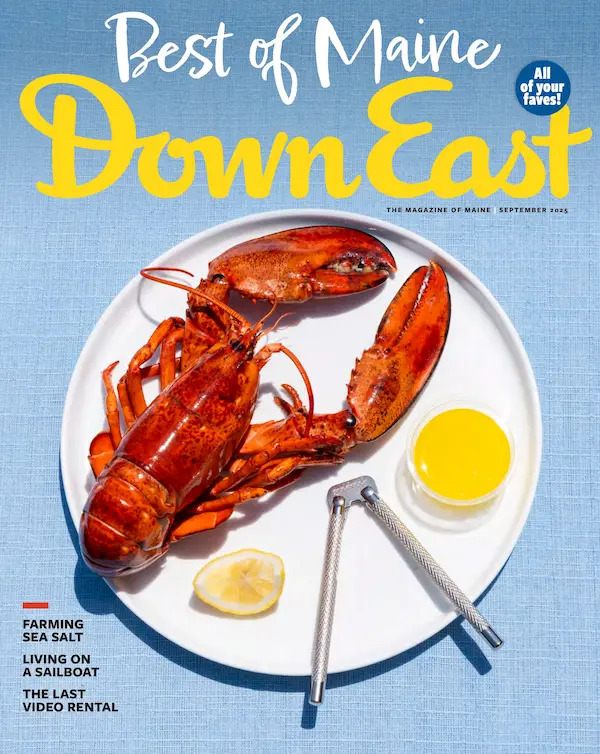From our February 2016 issue
In 1927, finding a whale carcass would have been a bit like discovering a bag of money on the beach, which may explain why Albert Doughty and Chester Black were all smiles on this late-February afternoon. The men were among more than a dozen Orr’s Islanders, mostly lobstermen, who gathered on nearby Ragged Island to carve up a finback whale that had washed ashore during a storm. Supervising them was a retired whaling captain, William Sylvester, who estimated that the blubber (to be boiled into oil to make paint) and baleen (likely uses include whips and helmet frames) would fetch $250 — the equivalent of roughly $3,316 today. “The lobster fishery in 1927 was not like it is today,” explains Nathan Lipfert, senior curator of Maine Maritime Museum in Bath. “Then, it was just another low-income inshore fishery, and lobstermen generally pieced together a living by doing a number of different things. By late February, when this whale was found, these guys were ready for a little extra money, and bored enough to risk trying something a little different.” Still, it wouldn’t have been much of a bonus, especially when one figures in the costs associated with the project. “The meat was probably pretty rank by the time the fishermen found it,” Lipfert says. “In fact, I would guess most of these guys never wore those clothes again.”




